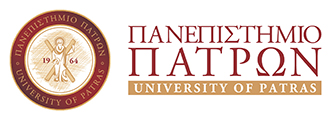Co-ordinator: George Kagadis
Lecturers: George Kagadis, Dimitris Apostolopoulos, Konstantinos Chatzipapas, Stratos David, Panos Georgoulias, Ioannis Kandarakis, Evangelia Kounadi, George Loudos, Osama Mawlawi, Panayiotis Papadimitroulas, Nikos Papathanasiou, Ioannis Panayiotopoulos, Dimitris Plachouris, Theodoros Skouras, George Fountos, Ioannis Valais
Aim and Objectives:
The aim of this course is to introduce student to the basic principles of nuclear medicine practices for both imaging and therapy. The students are expected to acquire a knowledge of the fundamental aspects of the structure of the nucleus, radioactive decay, nuclear reactions and the interaction of radiation and matter. The experimental techniques used (or developed) for nuclear physics purposes (logic circuits, gamma cameras, semiconductor detectors) are described and their influence on development of new technologies are discussed. The course deals with nuclear diagnostic methods to detect the transportation and transformation of chemical substances of biological and other systems and provide training to control and optimize advanced nuclear diagnostic equipment.
Course Content:
- Basic Nuclear Physics: Composition and structure of the Atomic Nucleus. Energy Levels and Binding Energies. Nuclear stability and instability
- Radioactivity and modes of radioactive decay: Physics of radiation and radioactivity, natural and artificial radiation. Alpha, beta, gamma-decay, electron capture and decay, isomeric transitions and internal conversion. calculations of radioactive decay, exponential equations, calculations of radiation dosimetry, half-life equations,
- Radionuclide production: Activation and activation cross sections.Nuclear Fission and Nuclear Reactors, Radioactive Equilibrium and Radionuclide Generators. Charged-particle accelerators: cyclotron and other types of accelerators, radiopharmaceutical dose determinations.
- Basic structure of photon counting detectors: Collimators,Scintillators and optical photon detectors (photomultiplier tubes, Silicon Photomultipliers-SiPM, Avalanche photodiodes-APD). Direct detection techniques by semiconductors and photoconductors technology.
- Gamma-ray spectroscopy: Shapes and structure of gamma-ray spectra, energy resolution, pulse height spectrometry, use of energy window.
- Imaging Instrumentation of Nuclear Medicine: Basic aspects in imaging and non-imaging radiation detection instrumentation including: scintillation detectors, multichannel analyzers, planar gamma camera, SPECT (single photon emission computerized tomography), PET (positron emission tomography), Hybrid PET/CT and PET/MRI scanners, quality assurance testing for Nuclear Medicine instrumentation including G-M detectors, ionization chambers and scintillation detectors. Image fusion for SPECT/CT, PET/CT and PET/MRI.
- Image Quality and Quality Control in Nuclear Medicine: Basic image quality parameters in nuclear medicine. Contrast detail and Observer Performance characteristics. Quality control and acceptance testing protocols
- Internal Dosimetry and Therapeutic applications: Diagnostic and therapeutic radiopharmaceutical and organ doses, Methods for dose calculation in organs and tissues, new software for organ calculation eg. OLINDA/EXM, absorbed fractions, modeling assumptions or Monte Carlo calculations, anthropomorphic ‘phantoms’ mathematical models of the human body, the role of SPECT and PET in internal dosimetry calculations. Monte Carlo simulations for radiation dose estimation.
- Clinical Nuclear Medicine radiopharmacy: Production of radionuclides, radiopharmaceutical chemistry, radiopharmaceuticals and methods of radiolabeling, characteristics of specific radiopharmaceuticals, biodistributions and physiological mechanisms of tracer uptake, pharmacokinetics, specific activity, concentration determination, dose calculations, methods of dispensing, quality assurance of radiopharmaceuticals, and universal precautions.
- Molecular Imaging: theory and applications of molecular imaging and how this impact clinical studies, patient monitoring, drug industry, etc.
Suggested Textbooks
- D.L. Bailey, J.L. Humm, A. Todd-Pokropek, A. van Aswegen Nuclear Medicine Physics. A Handbook for Teachers and Students. IAEA 2014
- S. Cherry, J. Sorensen, M. Phelps. Physics in nuclear medicine. Sixth ed. Philadelphia, Saunders/Elsevier, 2012.
- G.C. Kagadis, N.L. Ford, D.N. Karnabatidis, G.K. Loudos Handbook of Small Animal Imaging; Preclinical Imaging, Therapy, and Applications’, CRC Press, Taylor and Francis, 2016
- International Atomic Energy Agency. Physics of Nuclear Medicne: A Handbook for teachers and students, IAEA, Vienna, 2016.
- Lecture notes
Grading policy
Projects and written examinations.

